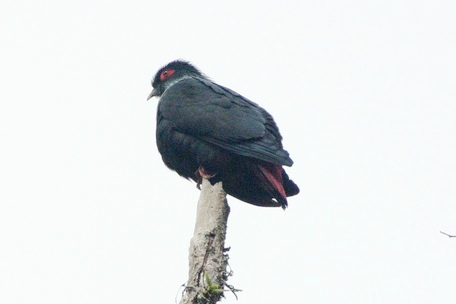Superregnum: Eukaryota
Cladus: Unikonta
Cladus: Opisthokonta
Cladus: Holozoa
Regnum: Animalia
Subregnum: Eumetazoa
Cladus: Bilateria
Cladus: Nephrozoa
Superphylum: Deuterostomia
Phylum: Chordata
Subphylum: Vertebrata
Infraphylum: Gnathostomata
Megaclassis: Osteichthyes
Cladus: Sarcopterygii
Cladus: Rhipidistia
Cladus: Tetrapodomorpha
Cladus: Eotetrapodiformes
Cladus: Elpistostegalia
Superclassis: Tetrapoda
Cladus: Reptiliomorpha
Cladus: Amniota
Classis: Reptilia
Cladus: Eureptilia
Cladus: Romeriida
Subclassis: Diapsida
Cladus: Sauria
Infraclassis: Archosauromorpha
Cladus: Crurotarsi
Divisio: Archosauria
Cladus: Avemetatarsalia
Cladus: Ornithodira
Subtaxon: Dinosauromorpha
Cladus: Dinosauriformes
Cladus: Dracohors
Cladus: Dinosauria
Ordo: Saurischia
Cladus: Eusaurischia
Subordo: Theropoda
Cladus: Neotheropoda
Cladus: Averostra
Cladus: Tetanurae
Cladus: Avetheropoda
Cladus: Coelurosauria
Cladus: Tyrannoraptora
Cladus: Maniraptoromorpha
Cladus: Maniraptoriformes
Cladus: Maniraptora
Cladus: Pennaraptora
Cladus: Paraves
Cladus: Eumaniraptora
Cladus: Avialae
Infraclassis: Aves
Cladus: Euavialae
Cladus: Avebrevicauda
Cladus: Pygostylia
Cladus: Ornithothoraces
Cladus: Ornithuromorpha
Cladus: Carinatae
Parvclassis: Neornithes
Cohors: Neognathae
Cladus: Neoaves
Cladus: Columbimorphae
Ordo: Columbiformes
Familia: Columbidae
Subfamilia: Treroninae
Genus: Alectroenas
Species: Alectroenas madagascariensis
Name
Alectroenas madagascariensis (Linnaeus, 1766)
References
Systema Naturae ed.12 p. 283
Vernacular names
Deutsch: Madagaskar-Fruchttaube
English: Madagascar Blue-pigeon
español: Paloma azul malgache
suomi: Madagaskarinsinikyyhky
français: Founingo bleu
magyar: Madagaszkári gyümölcsgalamb
italiano: Colomba azzurra del Madagascar
Nederlands: Madagaskar-blauwe duif
پنجابی: مڈغاسکر کبوتر
русский: Мадагаскарский синий голубь
svenska: Madagaskarblåduva
The Madagascar blue pigeon (Alectroenas madagascariensis) is a species of bird in the family Columbidae. The species is closely related to the other two extant species of blue pigeon, the Comoros blue pigeon and the Seychelles blue pigeon. It is endemic to northern and eastern Madagascar.
Taxonomy
In 1760 the French zoologist Mathurin Jacques Brisson included a description of the Madagascar blue pigeon in his six volume Ornithologie. He used the French name Le pigeon ramier bleu de Madagascar and the Latin Palumbus coeruleus madagascariensis.[2] Although Brisson coined Latin names, these do not conform to the binomial system and are not recognised by the International Commission on Zoological Nomenclature.[3] When in 1766 the Swedish naturalist Carl Linnaeus updated his Systema Naturae for the twelfth edition, he added 240 species that had been previously described by Brisson.[3] One of these was the Madagascar blue pigeon which he placed with all the other pigeons in the genus Columba. Linnaeus included a brief description, coined the binomial name Columba madagascariensis and cited Brisson's work.[4] This pigeon is now placed in the genus Alectroenas that was introduced in 1840 by the English zoologist George Robert Gray.[5][6] The species is monotypic: no subspecies are recognised.[6]
Distribution and habitat
Its natural habitats are tropical moist lowland forests and subtropical or tropical moist montane forests, both undisturbed and degraded, from sea-level to 2,000 m (6,600 ft). Within this habitat they are often observed from the tree tops and on branches above the canopy. The species is apparently partially migratory, leaving the northern part of the island for part of the year and moving west during the rainy season. More research is needed to understand this behaviour.[7]
Description
The Madagascar blue pigeon is 25 to 27 cm (9.8–10.6 in) long. The plumage of this species is dominated by shades of blue, as the name suggests; the neck and throat are silvery blue-grey and the plumes are filamentous, the upper parts are silvery-grey, and the breast blue-grey going to deep blue on the belly. The tail is deep red, and the head is blue with a large red patch of bare skin around the yellow eye. The feet are red and the small bill is greenish with a yellow tip.[7]
Behaviour and ecology
Little is known about its behaviour. It has been observed feeding on fruit, either in pairs or in small groups of up to 12 birds. The nests are simple platforms of twigs placed 6–20 m (20–66 ft) up a tree, and the clutch size is a single egg.[7]
References
BirdLife International (2016). "Alectroenas madagascariensis". IUCN Red List of Threatened Species. 2016: e.T22691588A93317822. doi:10.2305/IUCN.UK.2016-3.RLTS.T22691588A93317822.en. Retrieved 11 November 2021.
Brisson, Mathurin Jacques (1760). Ornithologie, ou, Méthode contenant la division des oiseaux en ordres, sections, genres, especes & leurs variétés (in French and Latin). Vol. 1. Paris: Jean-Baptiste Bauche. pp. 140–141, Plate 14 fig 1. The two stars (**) at the start of the section indicates that Brisson based his description on the examination of a specimen.
Allen, J.A. (1910). "Collation of Brisson's genera of birds with those of Linnaeus". Bulletin of the American Museum of Natural History. 28: 317–335. hdl:2246/678.
Linnaeus, Carl (1766). Systema naturae : per regna tria natura, secundum classes, ordines, genera, species, cum characteribus, differentiis, synonymis, locis (in Latin). Vol. 1, Part 1 (12th ed.). Holmiae (Stockholm): Laurentii Salvii. p. 283.
Gray, George Robert (1840). A List of the Genera of Birds : with an Indication of the Typical Species of Each Genus. London: R. and J.E. Taylor. p. 58.
Gill, Frank; Donsker, David; Rasmussen, Pamela, eds. (2020). "Pigeons". IOC World Bird List Version 10.1. International Ornithologists' Union. Retrieved 14 March 2020.
Baptista, L.F., Trail, P.W. & Horblit, H.M. (2017). Madagascar Blue-pigeon (Alectroenas madagascariensis). In: del Hoyo, J., Elliott, A., Sargatal, J., Christie, D.A. & de Juana, E. (eds.). Handbook of the Birds of the World Alive. Lynx Edicions, Barcelona. (retrieved from http://www.hbw.com/node/54361 on 11 March 2017)
Retrieved from "http://en.wikipedia.org/"
All text is available under the terms of the GNU Free Documentation License


